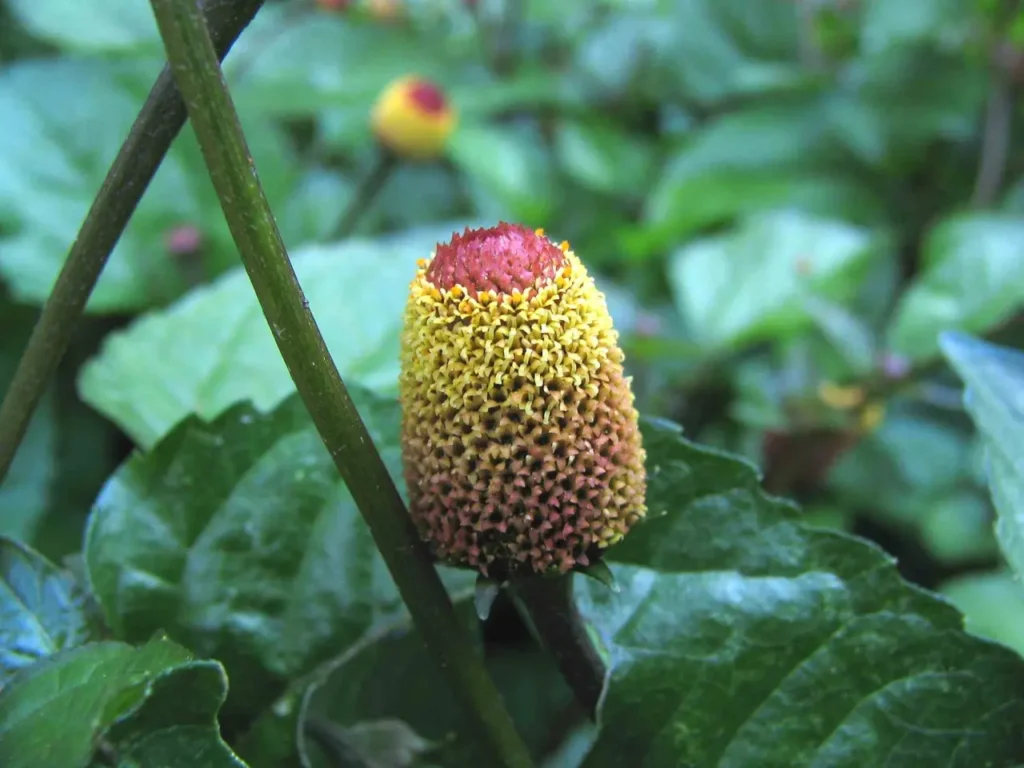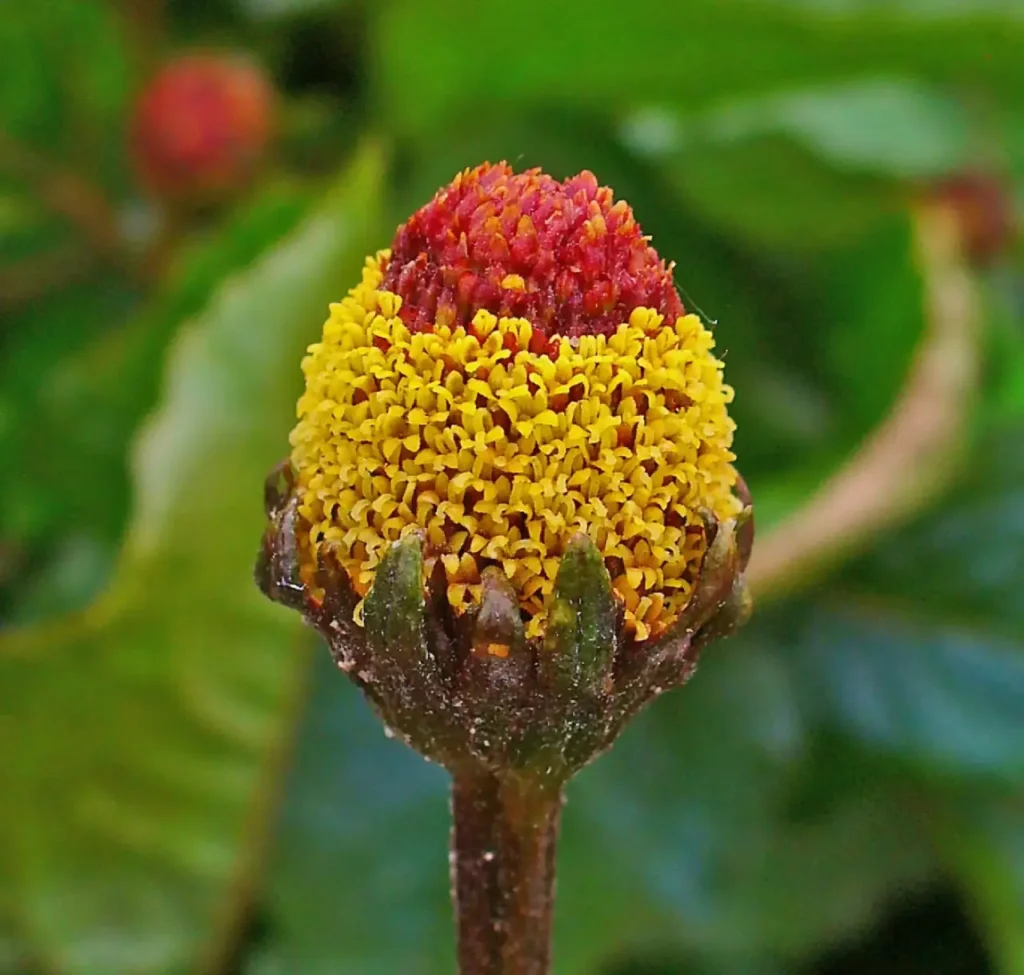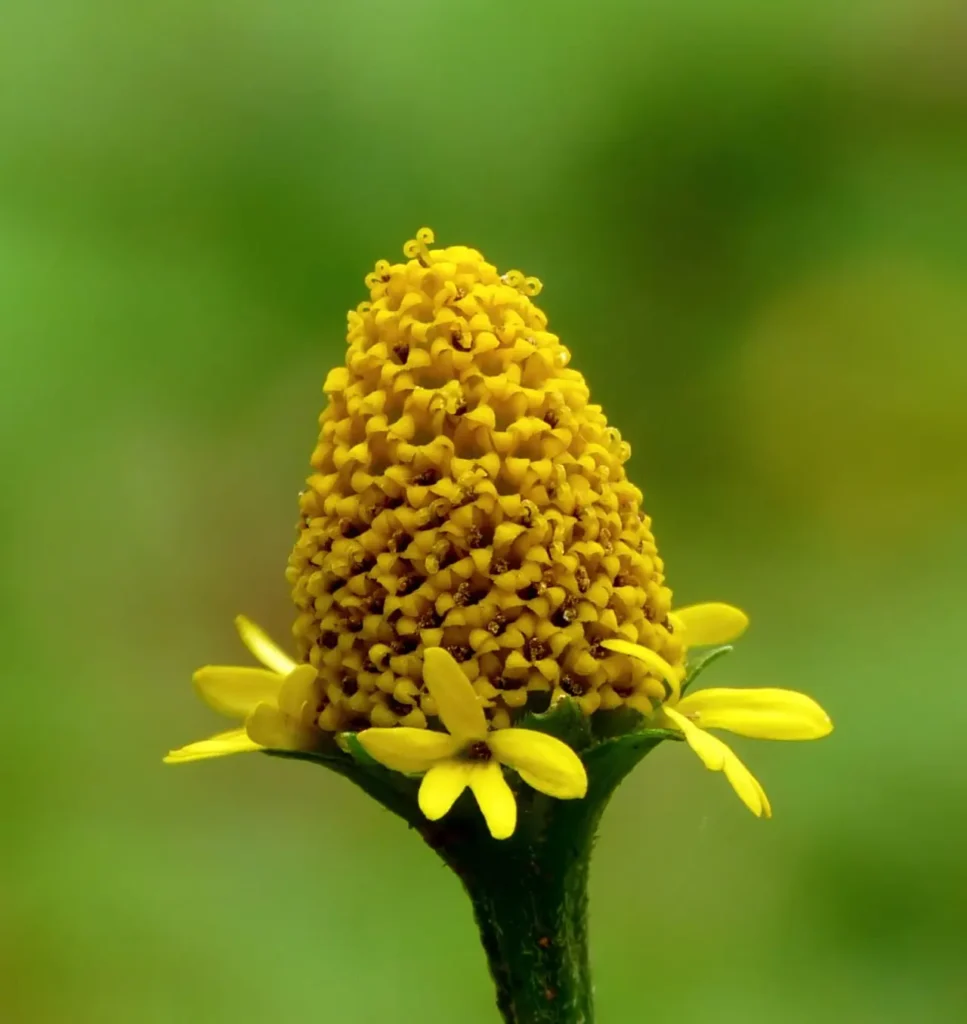In the realm of edible and medicinal plants, Acmella oleracea, commonly known as the Toothache Plant or Spilanthes, stands out as a unique and intriguing species. With its distinctive flavor profile and potent medicinal properties, this plant has been used for centuries in traditional medicine and cuisine. In this article, we delve into the fascinating world of Acmella oleracea, exploring its characteristics, uses, health benefits, and its role in both culinary and herbal traditions.




Appearance and Characteristics
Acmella oleracea is a small herbaceous plant that belongs to the Asteraceae family. It is characterized by its vibrant green leaves and bright yellow or red button-like flower heads. The flower heads are composed of a central disc surrounded by petal-like ray florets. When chewed, these flower heads release a unique tingling and numbing sensation in the mouth, which gives rise to its common name, the Toothache Plant.
Culinary Uses
The Toothache Plant is renowned for its distinctive flavor profile. The tingling and numbing sensation caused by chewing its flower heads are reminiscent of the sensation produced by Sichuan peppercorns. This unique flavor has earned it a place in various culinary traditions.
In cuisine, the Toothache Plant is often used as a natural flavoring agent and garnish. Its flower heads can be incorporated into salads, sauces, marinades, and even cocktails. Additionally, its distinctive flavor has inspired chefs to experiment with creating unique taste experiences that surprise and delight the palate.



Medicinal Benefits
Beyond its culinary uses, Acmella oleracea has a long history of medicinal use in various cultures. It is renowned for its potential health benefits, primarily attributed to its active compounds, including alkylamides and spilanthol.
- Oral Health: The numbing and analgesic properties of the Toothache Plant have led to its historical use for alleviating toothaches, gum infections, and mouth ulcers. It is believed to provide relief by reducing pain and inflammation in the oral cavity.
- Digestive Health: In traditional medicine, Acmella oleracea has been used to aid digestion and soothe gastrointestinal discomfort. Its potential to stimulate saliva production and promote digestion has made it a valuable herbal remedy.
- Immune Support: Some studies suggest that Acmella oleracea may possess immune-modulating properties, potentially supporting the body’s defense mechanisms.
Cultural Significance and Modern Applications
Acmella oleracea has been a part of traditional medicine systems in various parts of the world. It has been used in Ayurvedic, Chinese, and Indigenous medicine for its oral and digestive health benefits.
In modern times, the Toothache Plant’s unique flavor and potential health benefits have garnered attention from the culinary and herbal industries. It has found its way into herbal supplements, tinctures, and even natural toothpaste formulations.




Acmella oleracea, the Toothache Plant, embodies the intriguing intersection of culinary delight and traditional medicine. Its unique flavor and medicinal properties showcase the intricate relationships between plants and human well-being. By exploring the uses and benefits of Acmella oleracea, we gain a deeper appreciation for the diverse ways in which nature’s bounty enriches our lives, both on the plate and in the realm of health and wellness.








